This is named after the place where babies are said to be found. It was built in 1984 on part of the site of Nottingham Women’s Hospital. In c2002, it was renamed Varsity, but now has its original name. The first patients entered the hospital in January 1930. The last baby was delivered in November 1981. Not long after, the main hospital building was converted into flats.
A plaque documenting the history of The Gooseberry Bush.
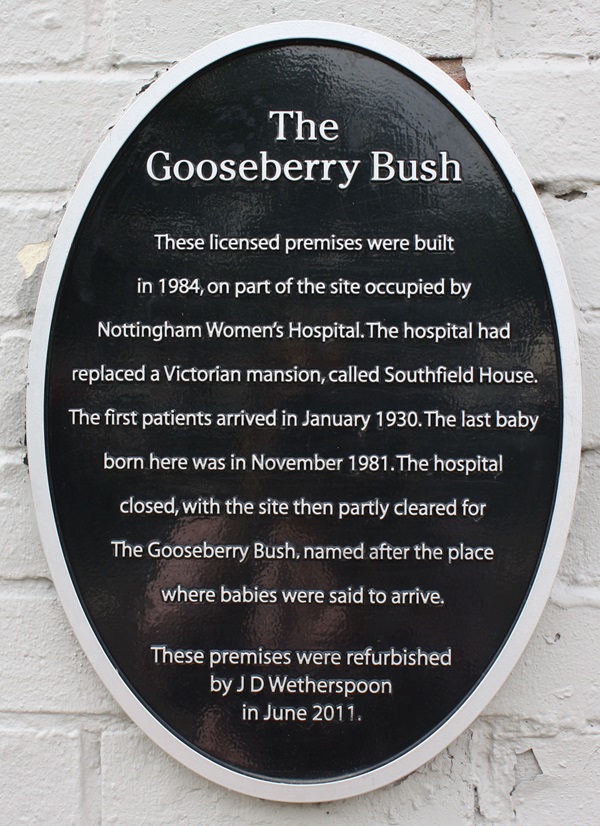
The text reads: These licensed premises were built in 1984, on part of the site occupied by Nottingham Women’s Hospital. The hospital had replaced a Victorian mansion, called Southfield House. The first patients arrived in January 1930. The last baby born here was in November 1981. The hospital closed, with the site then partly cleared for The Gooseberry Bush, named after the place where babies were said to arrive.
These premises were refurbished by J D Wetherspoon in June 2011.
A print of Market Place, Nottingham.
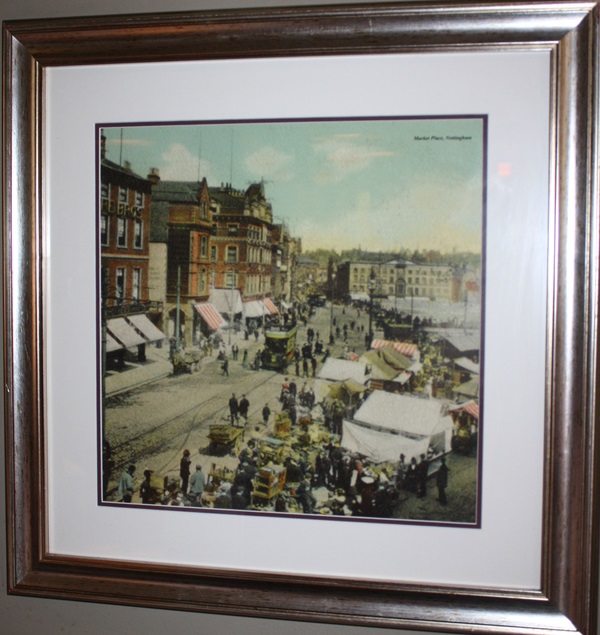
Text about the ‘Gooseberry Bush’.
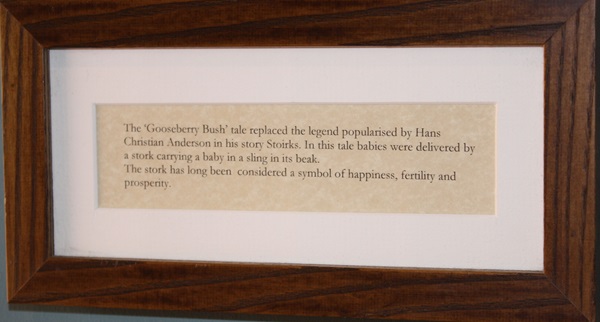
The text reads: The ‘Gooseberry Bush’ tale replaced the legend popularised by Hans Christian Anderson in his story Storks. In this tale babies were delivered by a stork carrying a baby in a sling in its beak.
The stork has long been considered a symbol of happiness, fertility and prosperity.
A photograph of Hans Christian Anderson.
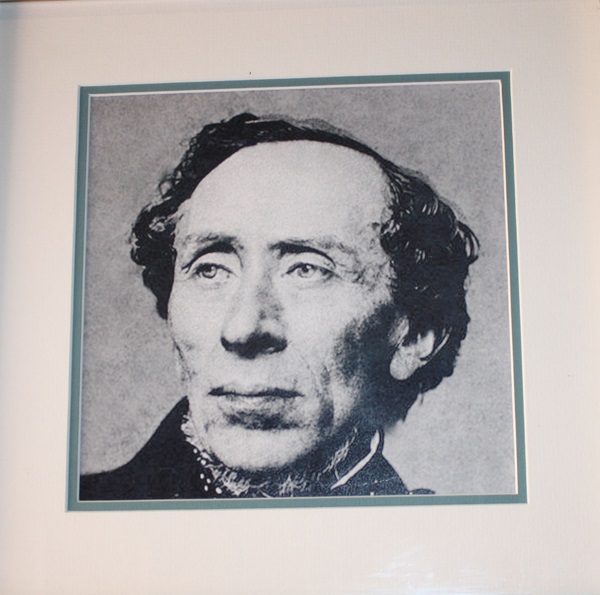
A sketch of a stork carrying a baby.
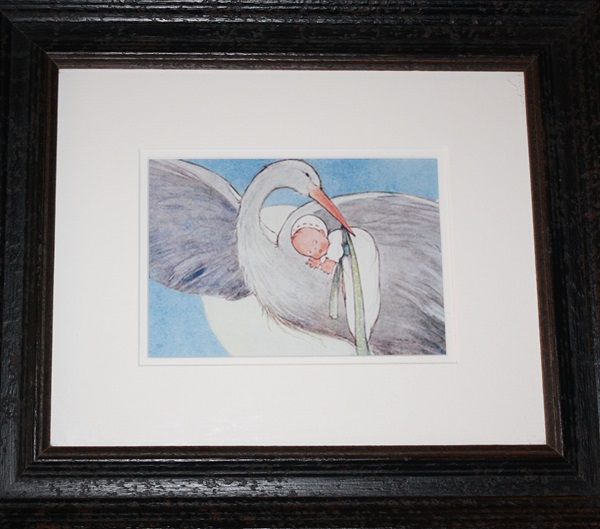
Text about the ‘Gooseberry Brush’.
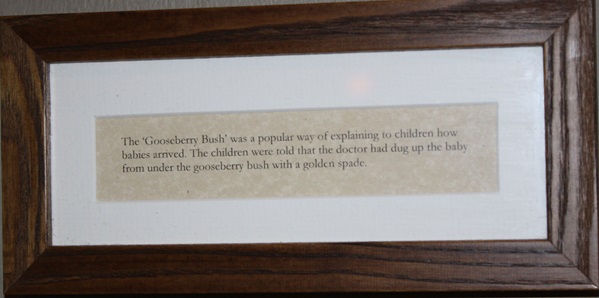
The text reads: The ‘Gooseberry Bush’ was a popular way of explaining to children how babies arrived. The children were told that the doctor had dug up the baby from under the gooseberry bush with a golden spade.
A print and text about the story of storks and babies.
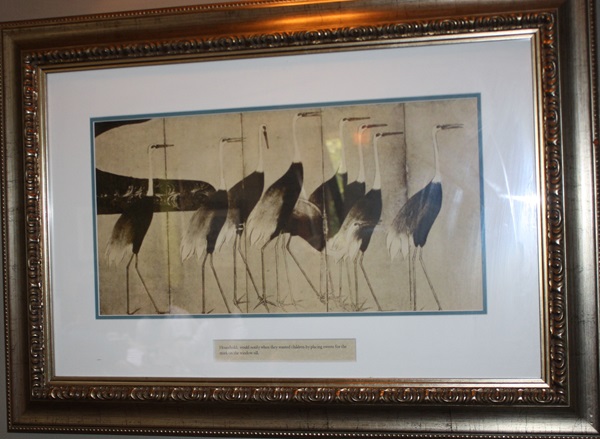
The text reads: Households would notify when they wanted children by placing sweets for the stork on the window sill.
A window feature explaining the relation between gooseberries and babies.
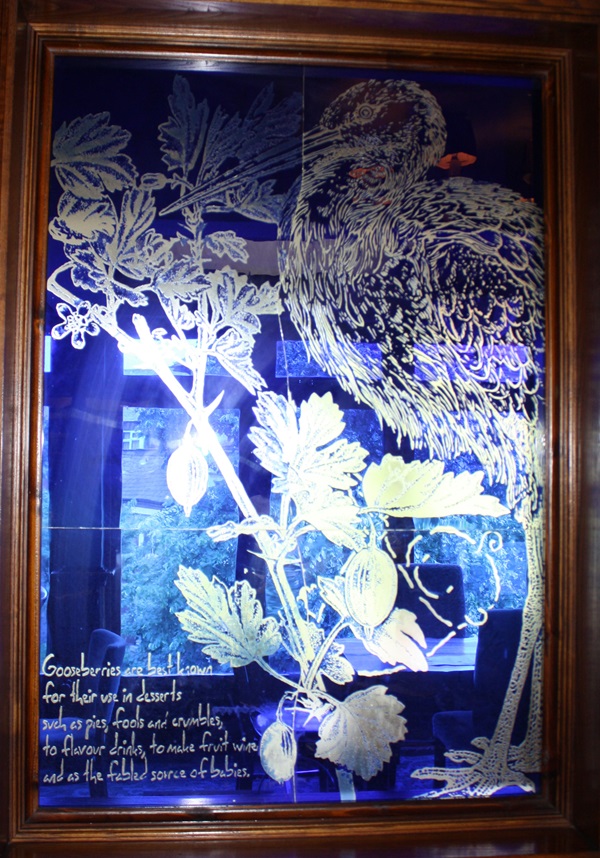
The text reads: Gooseberries are best known for their use in desserts such as pies, fools and crumbles, to flavour drinks, to make fruit wine and as the fabled source of babies.
Text about The Arboretum.
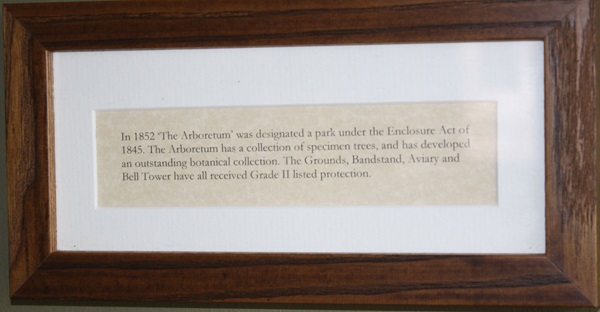
The text reads: In 1852 ‘The Arboretum’ was designated a park under the Enclosure Act of 1845. The Arboretum has a collection of specimen trees, and has developed an outstanding botanical collection. The Grounds, Bandstand, Aviary and Bell Tower have all received Grade II listed protection.
A print of The Aviary, Arboretum, Nottingham.
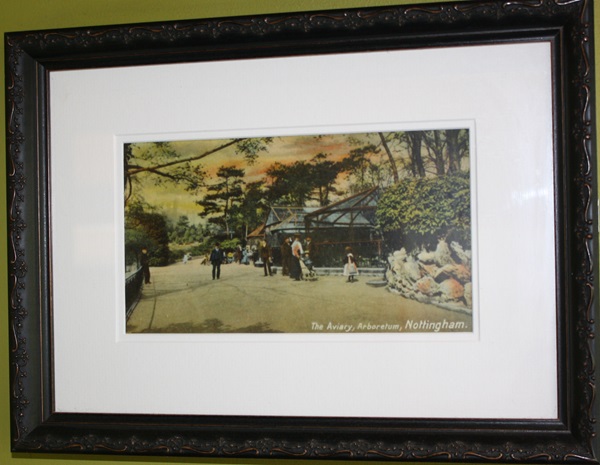
A photograph of the Arboretum Chinese Bell, 1920.
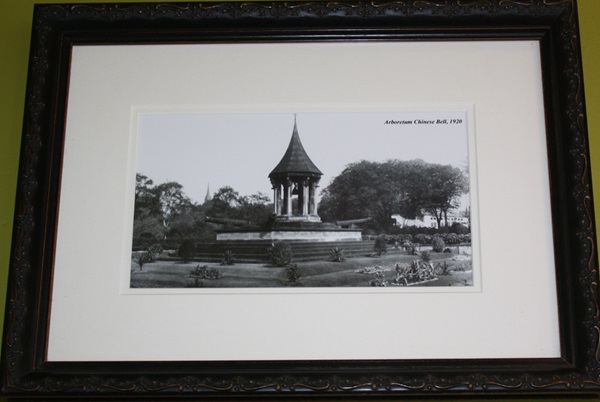
A painting of the band stand by Margaret Spencer.
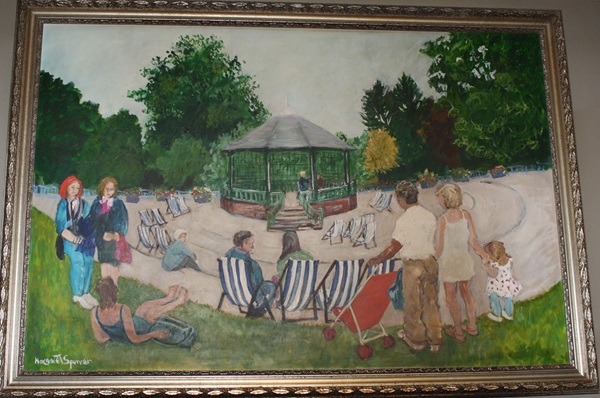
The text reads: The painting of the bandstand in the Arboretum is painted by Margaret Spencer, a Nottingham artist. The painting is done with acrylic on canvas in Margaret’s bright and vibrant style.
Text about Lord Byron.
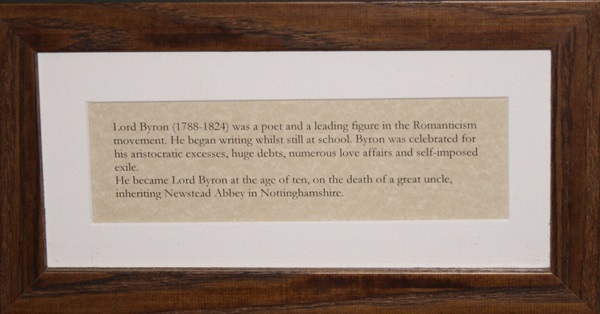
The text reads: Lord Byron (1788-1824) was a poet and a leading figure in the Romanticism movement. He began writing whilst still at school. Byron was celebrated for his aristocratic excesses, huge debts, numerous love affairs and self-imposed exile.
He became Lord Byron at the age of ten, on the death of a great uncle, inheriting Newstead Abbey in Nottinghamshire.
A portrait of Lord Byron.
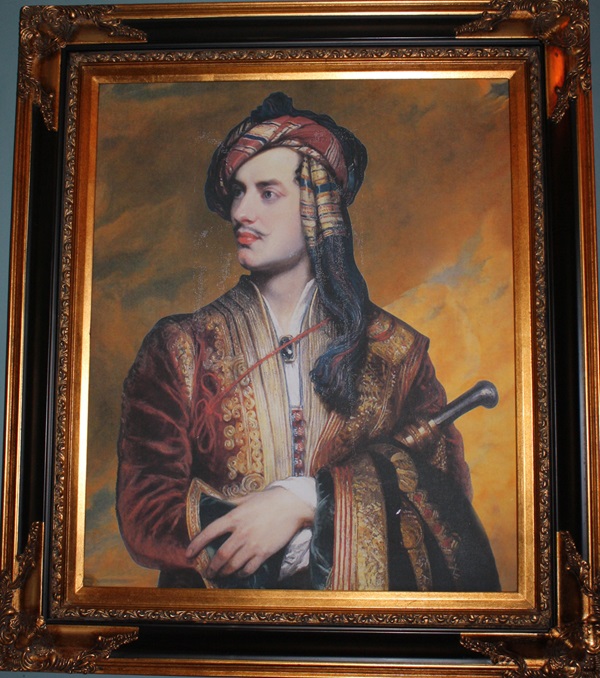
A print of the poem ‘She Walks In Beauty’ by Lord Byron.
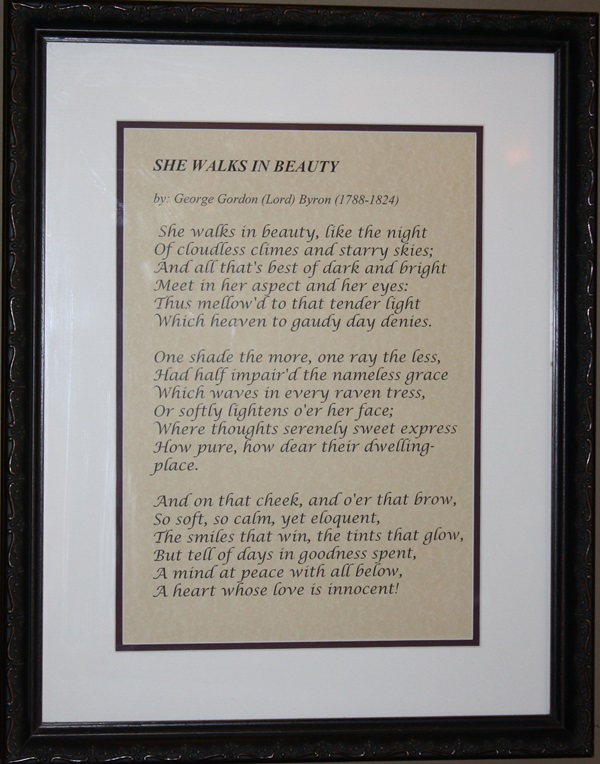
The text reads:
She walks in beauty, like the night
Of cloudless climes and starry skies;
And all that’s best of dark and bright
Meet in her aspect and her eyes:
Thus mellow’d to that tender light
Which heaven to gaudy day denies.
One shade the more, one ray the less,
Had half impair’d the nameless grace
Which waves in every raven tress,
Or softly lightens o’er her face;
Where thoughts serenely sweet express
How pure, how dear their dwelling place.
And on that cheek, and o’er that brow,
So soft, so calm, yet eloquent,
The smiles that win, the tints that glow,
But tell of days in goodness spent,
A mind at peace with all below,
A heart whose love is innocent!
An illustration of Newstead Abbey, home to Lord Byron.
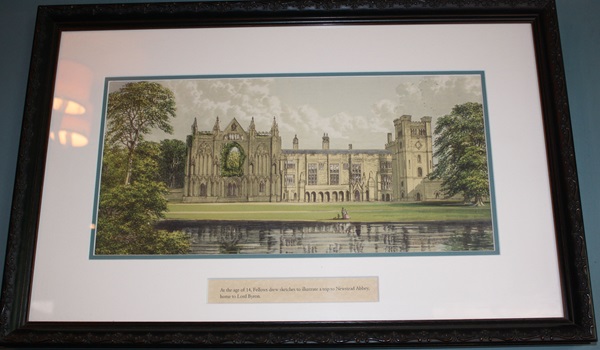
Text about John Russell Hind.
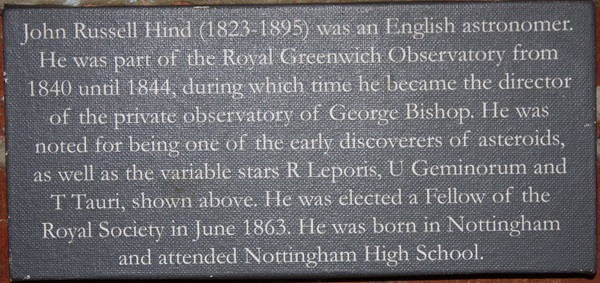
The text reads: John Russell Hind (1823-1895) was an English astronomer. He was part of the Royal Greenwich Observatory from 1840 until 1844, during which time he became the director of the private observatory of George Bishop. He was noted for being one of the early discoverers of asteroids, as well as the variable stars R Leporis, U Geminorum and T Tauri, shown above. He was elected a fellow of the Royal Society in June 1863. He was born in Nottingham and attended Nottingham High School.
An illustration of the Royal Observatory, Greenwich.
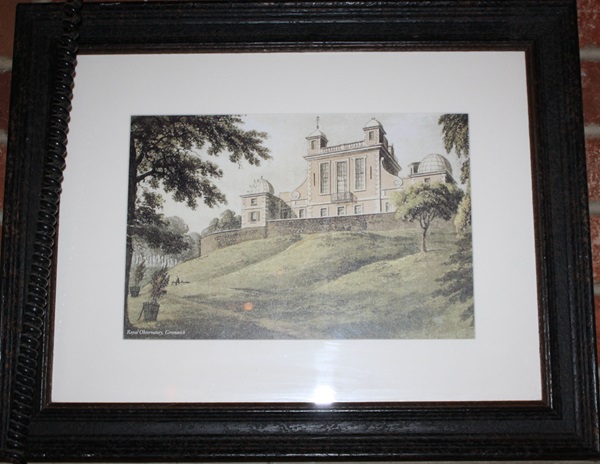
A photograph of John Russell Hind.
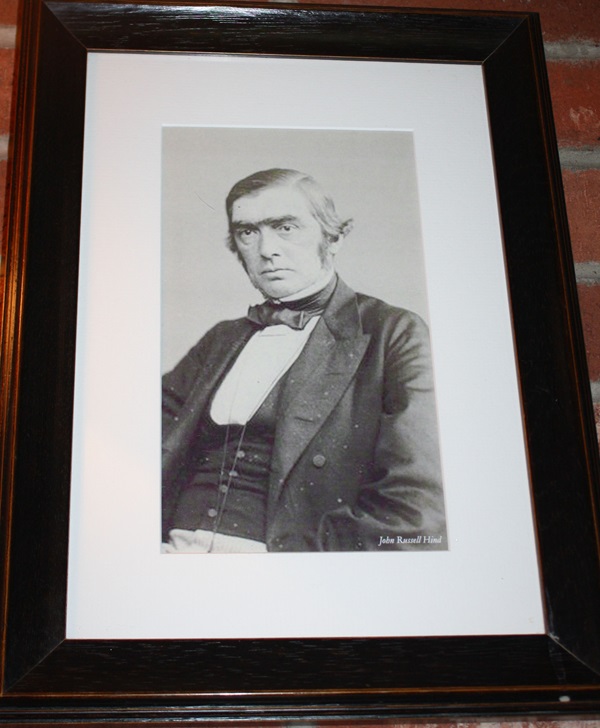
A print of Paul Sandby.
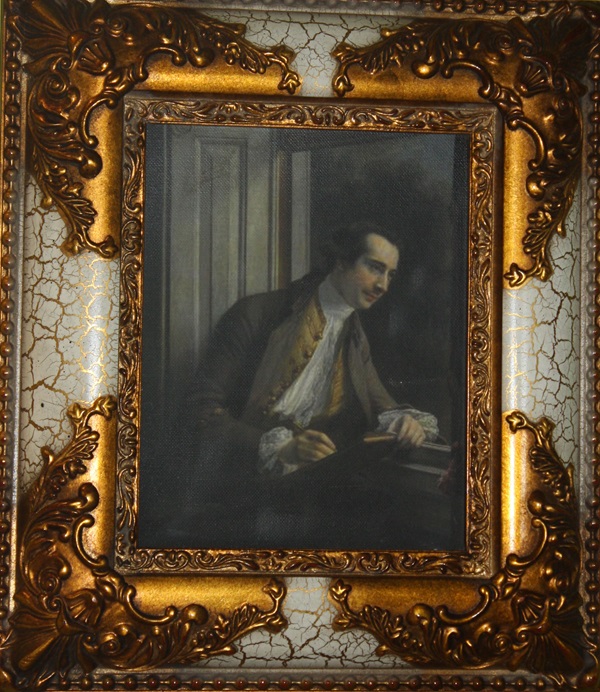
Text about Paul Sandby.
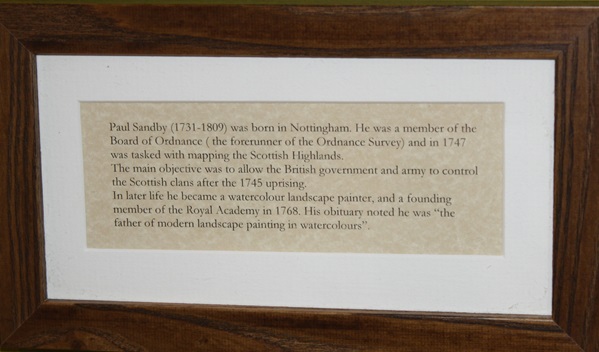
The text reads: Paul Sandby (1731-18090 was born in Nottingham. He was a member of the Board of Ordnance (the forerunner of the Ordnance Survey) and in 1747 was tasked with mapping the Scottish Highlands.
The main objective was to allow the British government and army to control the Scottish clans after the 1745 uprising.
In later life he became a watercolour landscape painter, and a founding member of the Royal Academy in 1768. His obituary noted he was “the father of modern landscape painting in watercolours”.
A print of a sketch drawn by Charles Fellows, of the ruins of ancient cities in Asia Minor.
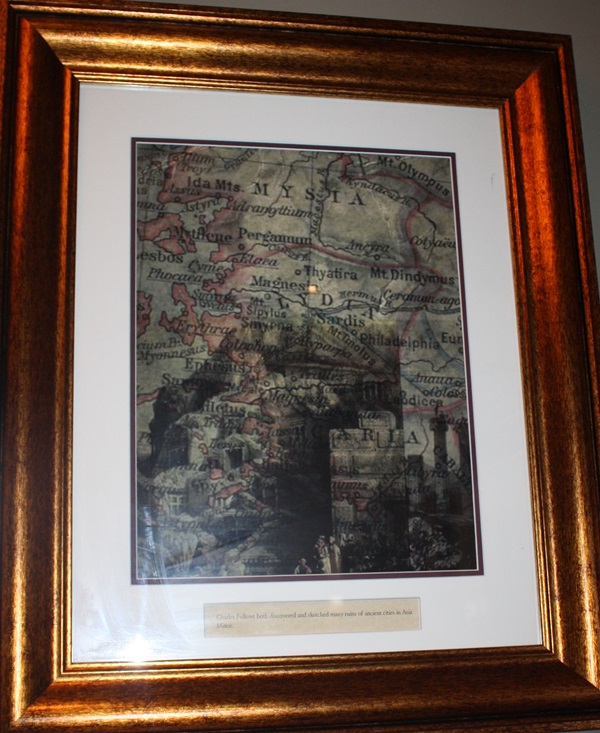
An illustration of the Temple of Aphrodite at Aphrodisias, drawn by Charles Fellows.
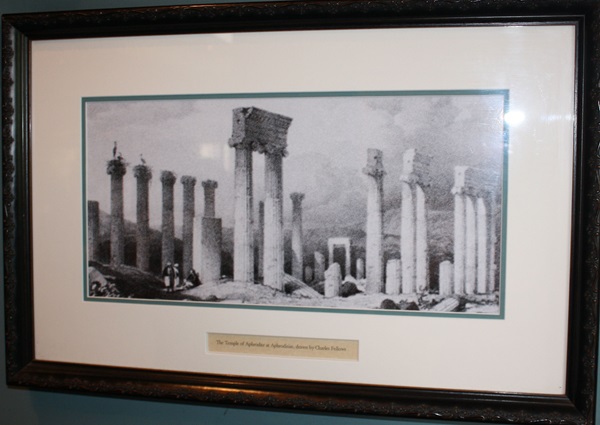
A map of Nottinghamshire, 1881-1883.
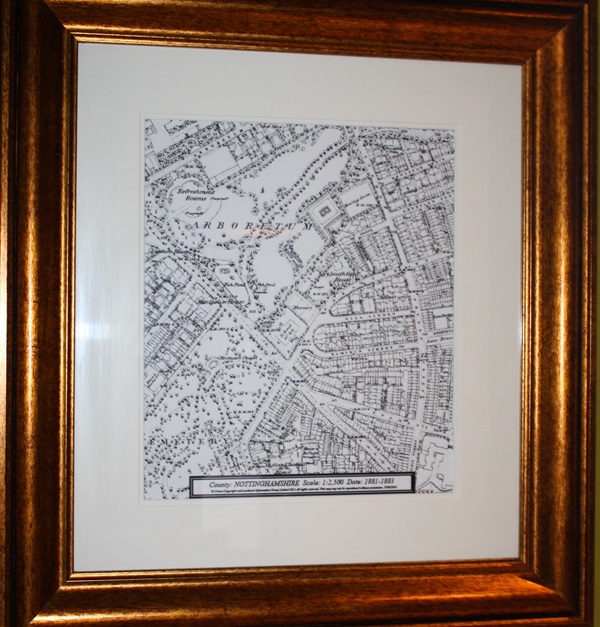
Text about Mary Gillick.
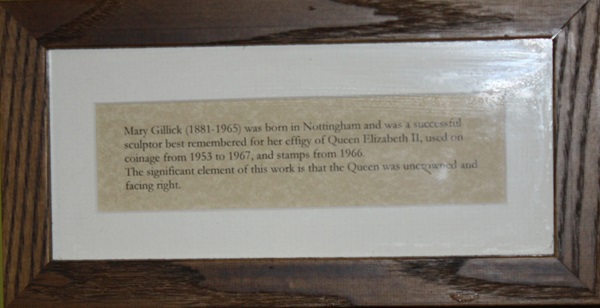
The text reads: Mary Gillick (1881-1965) was born in Nottingham and was a successful sculptor best remembered for her effigy of Queen Elizabeth II, used on coinage from 1953 to 1967, and stamps from 1966.
The significant element of this work is that the Queen was uncrowned and facing right.
A photograph of Mary Gillick.
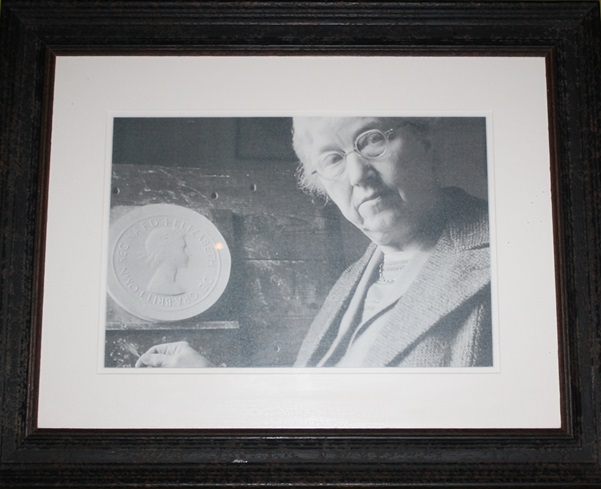
A print and text about decimal coinage.
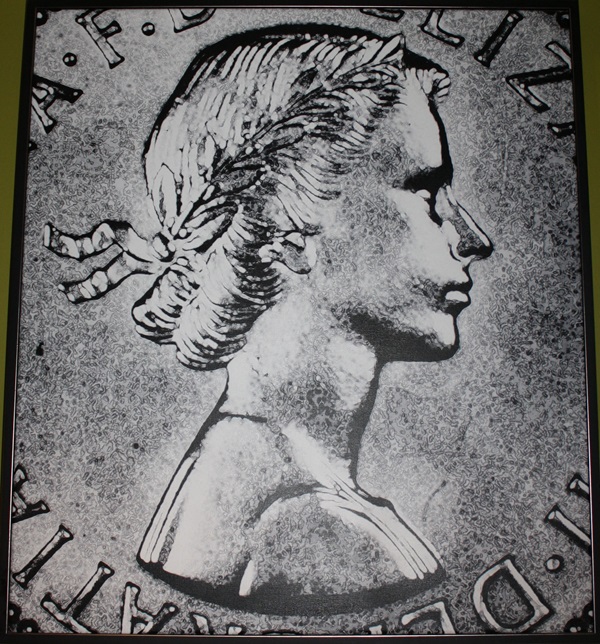
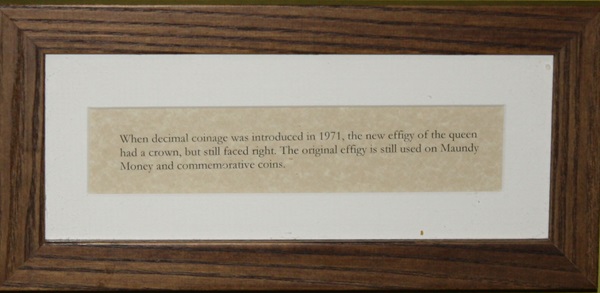
The text reads: When decimal coinage was introduced in 1971, the new effigy of the queen had a crown, but still faced right. The original effigy is still used on Maundy Money and commemorative coins.
Text about coinage.
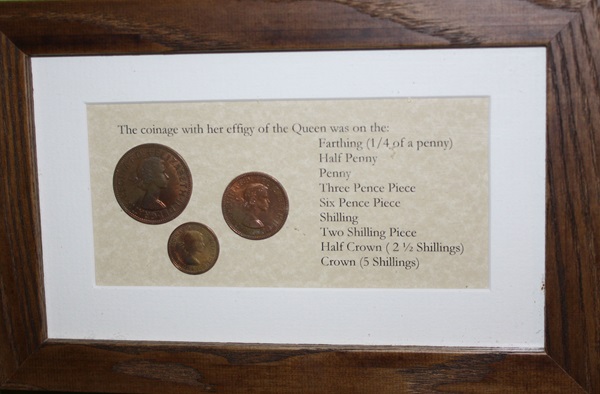
The text reads: The coinage with her effigy of the Queen was on the:
Farthing (1/4 of a penny)
Half Penny
Penny
Three Pence Piece
Six Pence Piece
Shilling
Two Shilling Piece
Half Crown (2 ½ Shillings)
Crown (5 Shillings)
A photograph and text about George Dance.
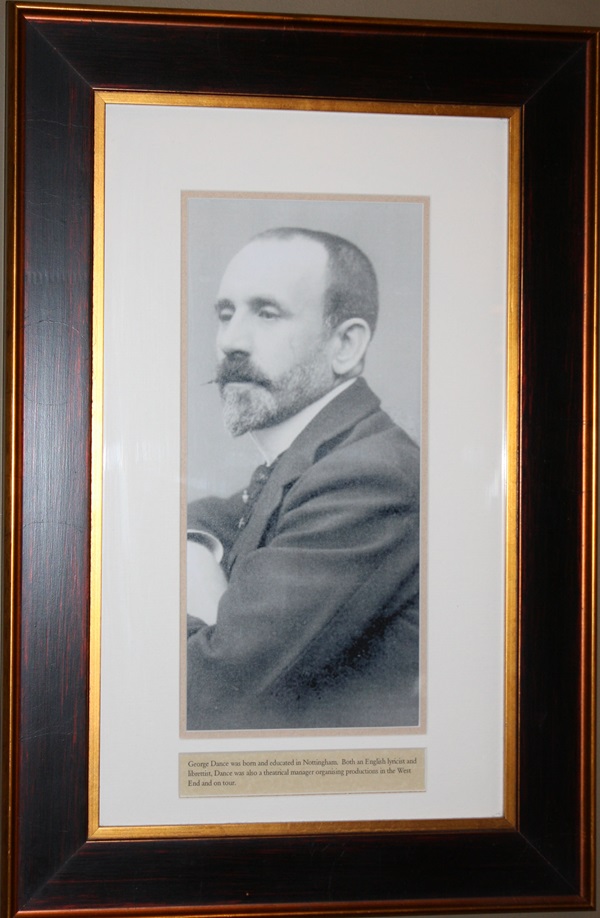
The text reads: George Dance was born and educated in Nottingham. Both an English lyricist and librettist, Dance was also a theatrical manager organising productions in the West End and on tour.
Text about the Nottingham Goose Fair.
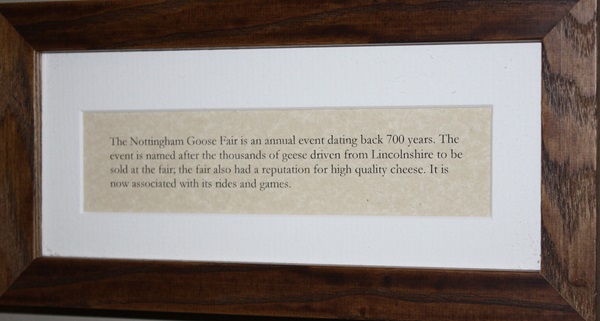
The text reads: The Nottingham Goose Fair is an annual event dating back 700 years. The event is named after the thousands of geese driven from Lincolnshire to be sold at the fair; the fair also had a reputation for high quality cheese. It is now associated with its rides and games.
A photograph of Nottingham Goose Fair.
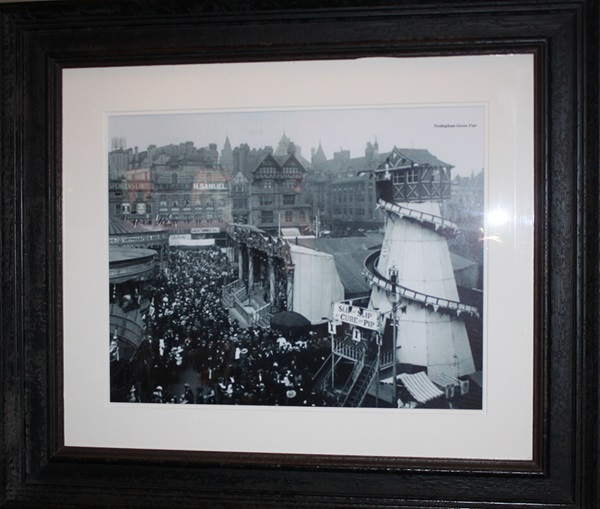
A painting of the Goose Fair, by Eirian Bell.
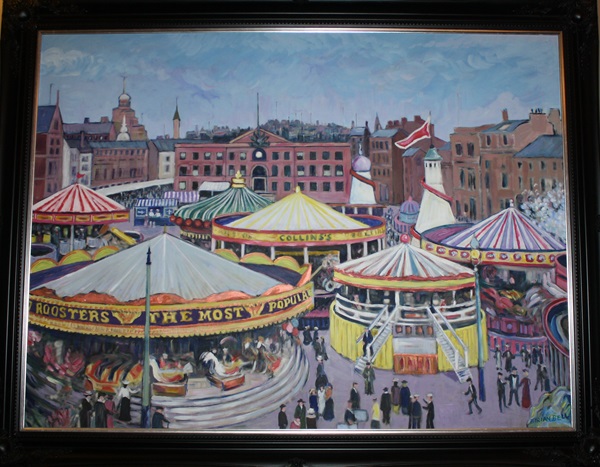
The painting depicting the Goose Fair in the early 1900s was painting by Eirian Bell, a local artist from Sherwood. She is a Fellow of the Nottingham Society of Artists. The piece is acrylic on canvas and is in her bold illustrative style.
Text about Paul Smith.
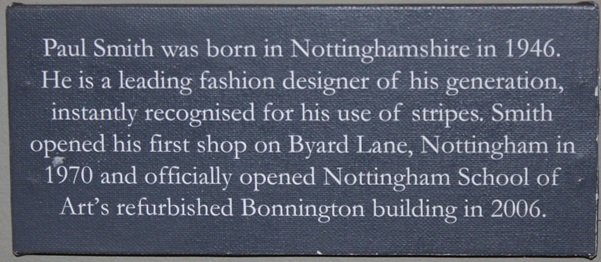
The text reads: Paul Smith was born in Nottinghamshire in 1946. He is a leading fashion designer of his generation, instantly recognised for his use of stripes. Smith opening his first shop on Byard Lane, Nottingham in 1970 and officially opening Nottingham School or Art’s refurbishment Bonnington building in 2006.
A photograph of Paul Smith.
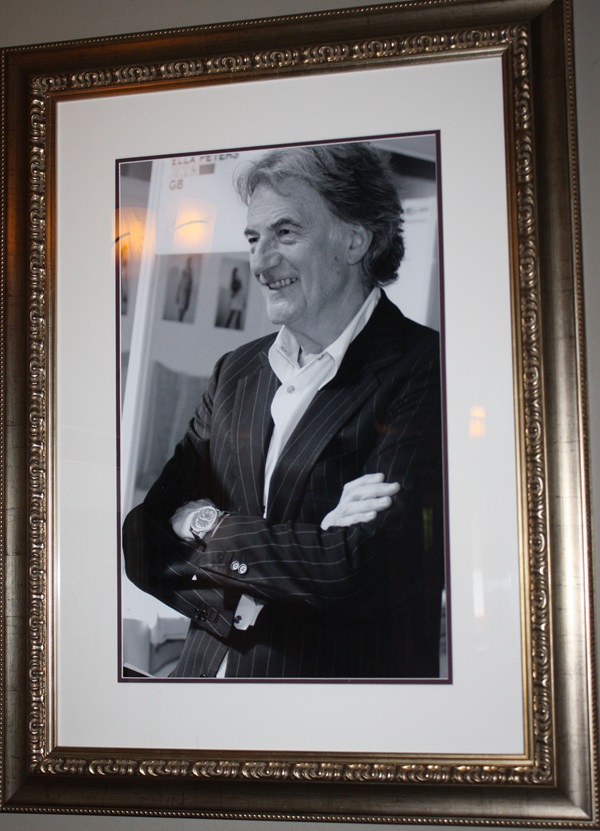
Copies of Paul Smith’s artwork.
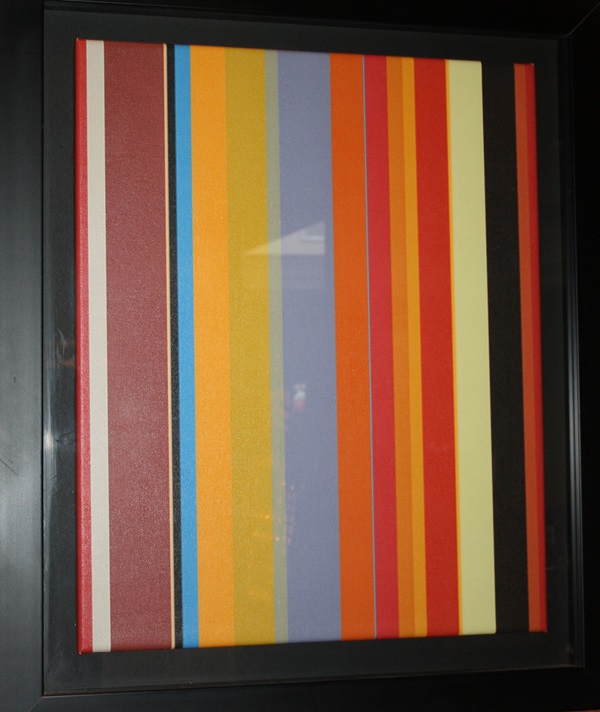
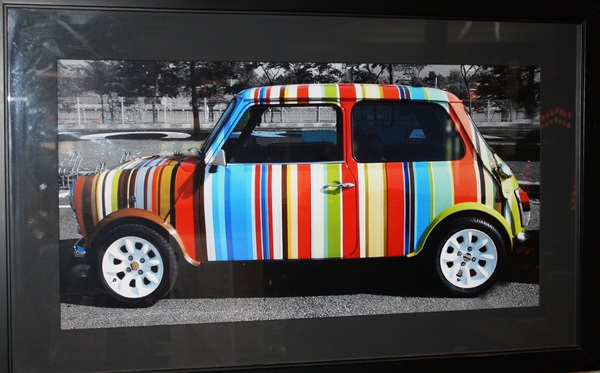
A photograph of Peel Street, c.1890.
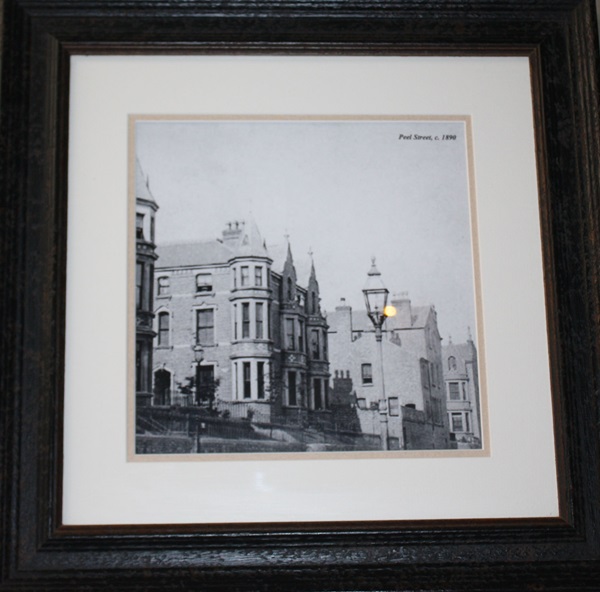
A photograph of Peel Street, c.1870.
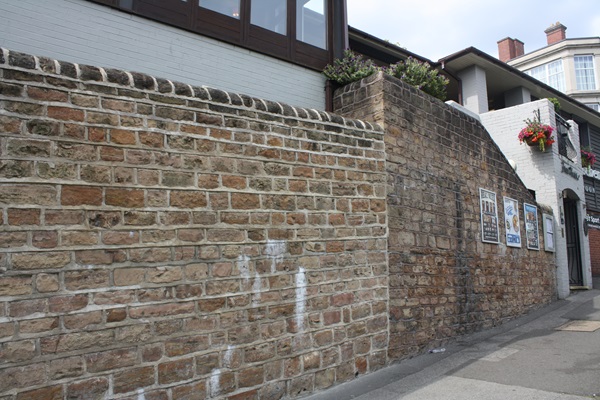
It is currently protected, and when part of it had to be rebuilt, it had to meet the exact criteria of the existing wall.
A sculpture entitled My Blue Heaven. Created by Artist Paula Joule Blake. Made from recycled wire from thatched cottages.
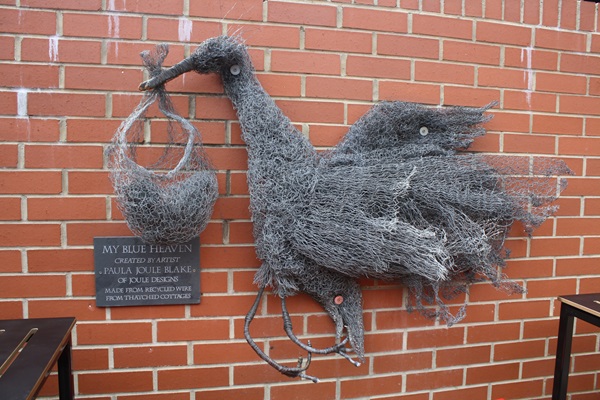
This wall at the front of the pub is from the 1900s.

It is currently protected, and when part of it had to be rebuilt, it had to meet the exact criteria of the existing wall.
External photograph of the building – main entrance.
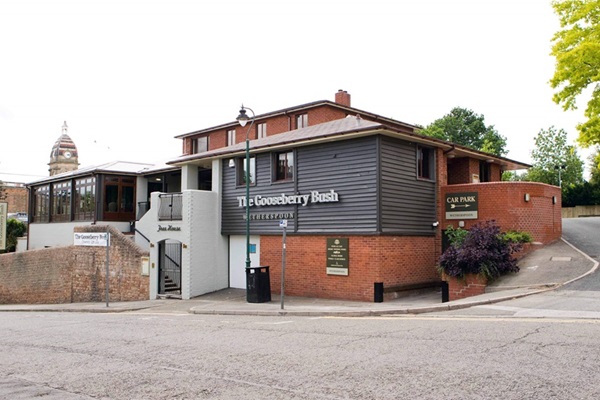
If you have information on the history of this pub, then we’d like you to share it with us. Please e-mail all information to: pubhistories@jdwetherspoon.co.uk